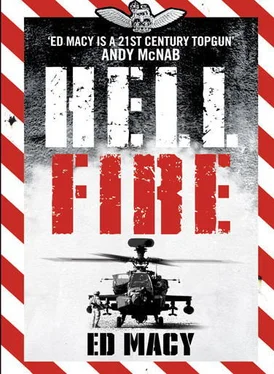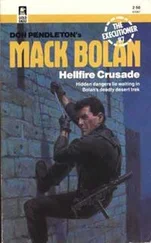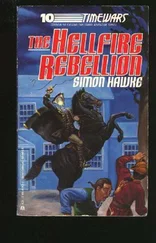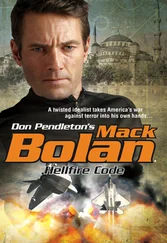We were also told that our mission had nothing to do with the Taliban or the narcotics trade. But during the three sweat-soaked months we spent with 3 Para in Helmand we were in contact with the Taliban every single day and found ourselves fighting for survival in villages that grew vast quantities of raw opium that ended up as heroin on the streets of the UK.
Sitting in the window of a coffee bar in broad daylight on my first trip to London after getting home, I was asked if I’d like to buy some.
It wasn’t my only rude awakening.
The army was short of Apache Weapons Officers. In fact, they had none. They wanted me to go back for another tour. I guess it wasn’t that surprising. For every soldier or marine accepted as a candidate for pilot selection, eighteen were shown the door. Over 2,000 applicants fell by the wayside just to get one of us through the course and onto operations.
We were lucky. Out of the fourteen on my grading, four went on to become pilots – an attrition rate of three and a half to one instead of the more normal five.
As we prepared ourselves to head out to Afghanistan once more, Scottie, my friend and instructor, decided to move Down Under with his family. He now teaches Attack Aviation to the Aussies. After years of abusing him about his outrageous watch collection, in a moment of madness I bought two of the twenty-five limited edition titanium Breitlings commissioned by the 656 Squadron aircrew to commemorate being the UK’s first Apache attack pilots. They had a dark blue face with a rippling Union Flag at three o’clock and an Apache AH1 – complete with our trademark weapons fit – replacing the nine.
After more than two decades in the British Army I couldn’t exactly put a Hellfire missile in my trophy cabinet, but at least I had a couple of suitably muscular timepieces to hand down to my young sons in case they ever need reminding that Dad wasn’t always a boring old fart.
JULY 2009
As I sit writing this from the comfort of my home friends continue to keep me informed about what’s happening in Afghanistan. Andy Wawn sends me regular emails even now, three years beyond that epic tour.
He and his fellow Apache pilots are firing more ammunition and flying more hours than we ever did. Repetition of tours is becoming more frequent, and the team is utterly ball-bagged.
A Major in the US Marines recently informed me that they are currently coming up against particularly heavy resistance in a place called Jugroom Fort. He thanked me for writing Apache and giving them a heads up.
1BIT:one standard 7.62 mm ball round for every one tracer round (1Ball1Tracer = 1BIT)
2i/c:second in command
30 mil:30mm High Explosive Dual Purpose Apache cannon rounds
.50 cal:British Forces L1A1 Heavy Machine Gun – 12.7 mm (.50 inch) calibre tripod-mounted or vehicle-mounted automatic
A109:Agusta 109 helicopter used by the SAS
AA:Anti-Aircraft – known as ‘Double A’. A large calibre gun used against low-flying aircraft
AAC:Army Air Corps – corps of the British Army that operates helicopters and fixed wing aircraft
ABFAC:Airborne Forward Air Controller
ACC:Army Catering Corps
ACTI:Air Combat Tactics Instructor
AK47:Soviet assault rifle – 7.62 mm automatic
ALPC:Arming and Loading Point Commander
Altitude:Height above sea level, rather than ground level
AMTAT:Air Manoeuvre Training and Advisory Team – senior instructors with expertise in multiple disciplines who were there to train, coach and test to ensure see that the Apache was worked up to its full fighting potential prior to being declared fully operational
ANA:Afghan National Army
ANP:Afghan National Police
ANSF:Afghan National Security Force
Apache:Apache AH Mk1 – the British Army Apache Attack Helicopter – built by AgustaWestland and fitted with the Longbow radar
APC:Armoured Personnel Carrier
APU:Auxiliary Power Unit – an engine used to power up the main engines or to provide power to an aircraft on the ground
AQ:Al-Qaeda
Armée de l’Air:French Air Force
ASE:Aircraft Survival Equipment
ATO:Ammunition Technical Officer
Attack helicopter:A helicopter that is designed around being a complete weapon system, rather than a weapon system designed to fit a helicopter
B1:B1 Lancer bomber – US Air Force high altitude long-range supersonic strategic bomber
Bag, the:A blacked-out cockpit used to teach Apache pilots how to fly at night with sole reference from the monocle
Battlegroup:A battalion-sized fighting force
BATS box:BATUS Asset Tracking System Box. A transponder that transmits to the exercise controllers the exact position of a vehicle during live firing training on BATUS
BATUS:British Army Training Unit Suffield – training unit at Canadian Air Force base, Suffield, Alberta
BC:Battery Commander
BDA:Battle Damage Assessment
Bergen:Army slang for a rucksack
Berm:A man-made ridge of earth, designed as an obstacle
Bird table:A table (often strewn with maps) that all of the main players gather around to discuss and brief the details of operations
Bitching Betty:The Apache’s female cockpit voice warning system
Black brain:The black kneeboard Apache pilots fly with on their thigh that contains everything that can’t be committed to memory and may be needed instantly in flight
Bob-up box:A piece of symbology displayed in the monocle that remains fixed in space. It allows the crew to know how far they are from a self-generated known point in space they were hovering over when it was created.
Bonedome:Helmet
Brick:A term used in Northern Ireland for a four man patrol
Broken Arrow:A base or fort that has been overrun by the enemy
BRU:Boresight Reticule Unit
C-17:RAF transport plane
CAG:Combined Air Ground
Calibre:The inside diameter of the barrel of a weapon
Carbine:Short-barrelled SA80 with an additional grip at the front – used by Apache pilots and tank crews – 5.56 mm automatic
CAS:Close Air Support
Casevac:Casualty Evacuation
CH47:Chinook – a large wide-bodied helicopter with two rotors on the top. Used by many countries for carrying troops – may also carry equipment inside or underslung below.
Chicken fuel:Just enough fuel to make it back direct and land with the minimum fuel allowance
Chicken plate:Triangular armoured plate to shield the vital organs within the chest cavity from bullets and shrapnel
Chippies:De Havilland Chipmunk T10 training aircraft
Choke point:A point where a natural narrowing occurs in a route – like a bottleneck.
CMDS:Counter Measures Dispensing System
CO:Commanding Officer – Lieutenant Colonel in charge of a regiment, battalion or the Joint Helicopter Force
Читать дальше
Конец ознакомительного отрывка
Купить книгу








